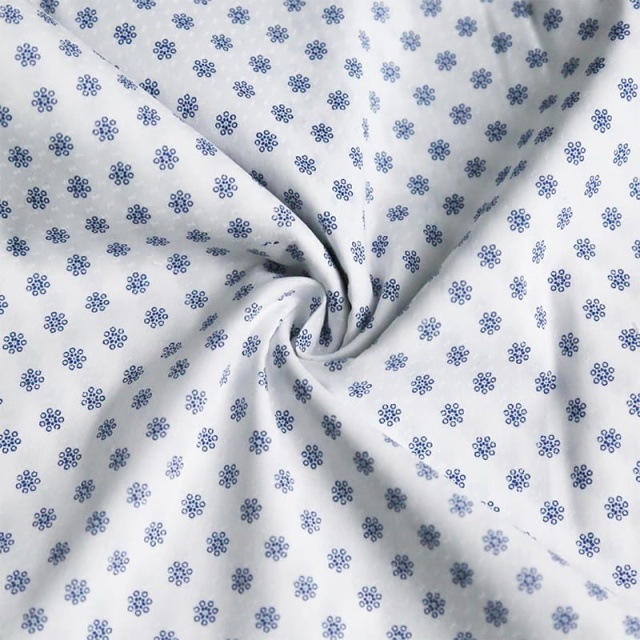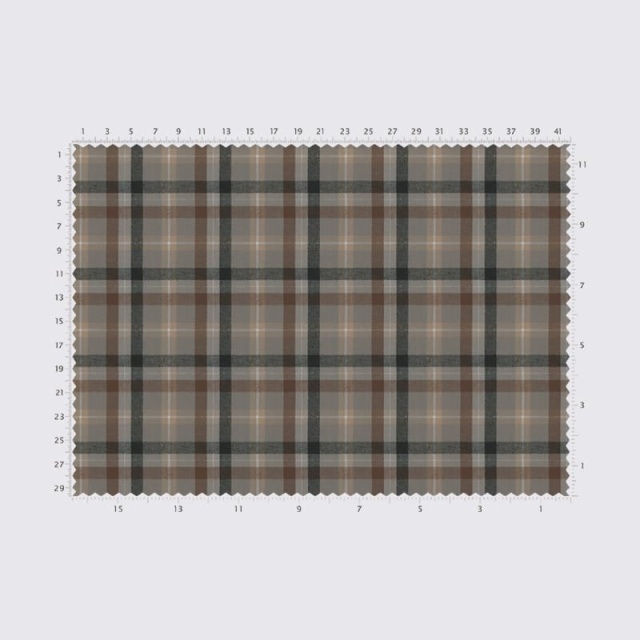The Environmental Benefits of Choosing Cotton Dyed Fabric
Jun 23,2025
The Environmental Benefits of Choosing Cotton Dyed Fabric
Introduction: Embracing Sustainable Choices in the Textile Industry
In recent years, the conversation around sustainability has gained significant traction, particularly within the textile industry. Consumers are becoming increasingly conscious of the environmental impact of their purchases, and as a result, the demand for sustainable fabrics has surged. Among these, **cotton dyed fabric** stands out due to its unique combination of aesthetic appeal and eco-friendliness. In this article, we will delve into the myriad environmental benefits associated with opting for cotton dyed fabric, ranging from its biodegradable properties to the sustainable practices employed in its production.
1. Understanding Cotton Dyed Fabric
Before we dive into the environmental benefits, it's essential to understand what cotton dyed fabric is. Cotton is a natural fiber derived from the cotton plant, widely recognized for its softness, breathability, and versatility. When it comes to dyeing, cotton can be treated with a variety of natural or synthetic dyes, resulting in vibrant colors and patterns. This process not only enhances the fabric's visual appeal but also allows for the creation of unique textiles that cater to diverse consumer tastes.
1.1 The Process of Dyeing Cotton Fabric
The dyeing process can vary greatly depending on the methods and materials used. Traditional dyeing techniques often employ natural dyes sourced from plants, minerals, and insects. These methods are generally more environmentally friendly than synthetic dyes, which can contain harmful chemicals that pollute waterways during production and disposal. By choosing cotton dyed fabric created with natural dyes, consumers can minimize the environmental impact associated with textile dyeing.
1.2 The Role of Organic Cotton
Organic cotton, a key player in sustainable textiles, is grown without the use of synthetic pesticides or fertilizers. This practice not only protects the environment but also promotes biodiversity. When dyed, organic cotton fabric maintains its eco-friendly credentials, making it a superior choice for environmentally conscious consumers.
2. The Eco-Friendly Aspects of Cotton Dyed Fabric
Cotton dyed fabric offers several environmental advantages, particularly when compared to synthetic alternatives. Below, we outline some key benefits that make it a compelling option for eco-friendly fashion enthusiasts.
2.1 Biodegradability of Cotton
One of the most significant advantages of cotton dyed fabric is its **biodegradability**. Unlike synthetic fibers, which can take hundreds of years to decompose, cotton is a natural fiber that breaks down quickly when exposed to environmental conditions. This means that when cotton dyed fabric reaches the end of its lifecycle, it does so without contributing to landfill waste, thereby reducing its overall environmental footprint.
2.2 Lower Carbon Footprint
The production of cotton dyed fabric typically results in a lower carbon footprint compared to synthetic fabrics. Cotton cultivation requires less energy than the production of polyester or nylon, which are derived from fossil fuels. Additionally, the cultivation of cotton can sequester carbon dioxide from the atmosphere, further mitigating its impact on climate change.
2.3 Water Usage and Conservation
While cotton farming does require a significant amount of water, sustainable practices can greatly reduce this need. Techniques such as rain-fed irrigation, crop rotation, and the use of organic farming methods can lead to more efficient water usage. Moreover, opting for cotton dyed fabric produced through responsible sourcing practices ensures that the water used in the dyeing process is treated and reused, minimizing waste.
3. Health and Safety Considerations
Choosing cotton dyed fabric is not only beneficial for the environment, but it also offers health advantages for consumers. Many synthetic fabrics contain harmful chemicals that can cause skin irritation or allergic reactions. On the other hand, cotton is naturally hypoallergenic and breathable, making it a safer choice for clothing and home textiles.
3.1 The Importance of Non-toxic Dyes
When selecting cotton dyed fabric, it is crucial to consider the types of dyes used. Natural dyes, as mentioned earlier, are generally safer for both the environment and human health. They do not contain the toxic substances often found in synthetic dyes, making them a preferable option for those who prioritize health and wellness in their fabric choices.
4. Supporting Ethical Labor Practices
The shift towards sustainable cotton dyed fabric also goes hand in hand with ethical labor practices. Many brands that focus on eco-friendly textiles are committed to fair labor practices, ensuring that workers involved in cotton cultivation and fabric production are treated with respect and compensated fairly.
4.1 Transparency in the Supply Chain
By choosing cotton dyed fabric from brands that prioritize ethical sourcing, consumers can support transparency in the supply chain. This practice not only promotes social responsibility but also encourages the entire industry to adopt more sustainable and ethical practices.
5. The Versatility of Cotton Dyed Fabric
Another attractive feature of cotton dyed fabric is its versatility. It can be used in various applications, from clothing to home décor. This adaptability allows consumers to make sustainable choices across multiple facets of their lives, contributing to a more eco-friendly lifestyle.
5.1 Fashion and Cotton Dyed Textiles
The fashion industry has seen a notable shift towards eco-conscious practices, with many designers embracing cotton dyed fabric for its aesthetic appeal and sustainability. As more consumers prioritize sustainability, designers are adapting their collections to include beautiful, vibrant cotton dyed pieces that resonate with eco-conscious shoppers.
5.2 Home Décor and Cotton Dyed Fabrics
Cotton dyed fabric is also an excellent choice for home furnishings. From curtains to upholstery, the durable nature of cotton, combined with its wide range of color options, makes it ideal for creating stylish and sustainable home environments.
6. Making the Switch: How to Choose Sustainable Cotton Dyed Fabric
Making the transition to cotton dyed fabric can seem daunting, but it doesn't have to be. Here are some tips to help you choose sustainable options:
6.1 Look for Certifications
When shopping for cotton dyed fabric, look for certifications such as GOTS (Global Organic Textile Standard) or OEKO-TEX Standard 100. These certifications ensure that the fabric meets specific environmental and safety standards.
6.2 Research Brands and Their Practices
Before making a purchase, research the brands you are considering. Look for information on their sourcing practices, labor policies, and commitment to sustainability. Brands that are transparent about their practices are more likely to adhere to eco-friendly standards.
6.3 Embrace Second-Hand Options
Another sustainable choice is to shop for second-hand cotton dyed fabric. Thrift stores, consignment shops, and online marketplaces often have a variety of cotton dyed items, allowing you to give pre-loved textiles a second life.
7. Frequently Asked Questions (FAQs)
7.1 What makes cotton dyed fabric environmentally friendly?
Cotton dyed fabric is environmentally friendly due to its biodegradability, lower carbon footprint, and the potential for using natural dyes that do not harm the environment.
7.2 How does organic cotton differ from conventional cotton?
Organic cotton is grown without the use of synthetic pesticides and fertilizers, making it a more sustainable and environmentally friendly option compared to conventional cotton.
7.3 Are there any health benefits to choosing cotton dyed fabric?
Yes, cotton dyed fabric is naturally hypoallergenic and breathable, making it a safer choice for those with sensitive skin or allergies.
7.4 How can I ensure I’m buying sustainable cotton dyed fabric?
Look for certifications like GOTS and OEKO-TEX, research brands’ sourcing and labor practices, and consider opting for second-hand items.
7.5 What are the best uses for cotton dyed fabric?
Cotton dyed fabric is versatile and can be used for clothing, home décor, and various textile applications, making it a great sustainable choice for many uses.
Conclusion: A Sustainable Choice for a Better Future
Opting for **cotton dyed fabric** is more than just a fashion statement; it is a commitment to sustainability and ethical practices that benefit the planet. By understanding the environmental advantages, health benefits, and ethical considerations associated with cotton dyed fabric, consumers can make informed choices that align with their values. As the demand for eco-friendly textiles continues to grow, the textile industry is likely to evolve towards more sustainable practices, paving the way for a brighter, greener future for all.
More Events
Unleashing Creativity with Custom Linen Printed Fabrics: A Comprehensive Guide
Unleashing Creativity with Custom Linen Printed Fabrics Table of Contents 1. Introduction to Custom Linen Printed Fabrics 2. What is Linen and Why Choose It? 3. The Benefits of Custom Linen Fabrics 4. Designing with Custom Linen Printed Fabrics 5. Printing Techniques for Custom Linen Fabrics 6. Applications of Custom Linen Printed Fabrics 7. Care and Maintenance of Lin
Jun 25,2025
The Versatility of Digital Printed Fabric: A Comprehensive Guide
Digital printed fabric has revolutionized the textile industry, offering a modern approach to printing that ensures vivid colors, intricate designs, and efficient production methods. This innovative technique utilizes digital technology to print high-quality images directly onto fabric, making it an ideal choice for various applications, including fashion, home décor, and promotional items. One of
Jun 24,2025
The Environmental Benefits of Choosing Cotton Dyed Fabric
The Environmental Benefits of Choosing Cotton Dyed Fabric Introduction: Embracing Sustainable Choices in the Textile Industry In recent years, the conversation around sustainability has gained significant traction, particularly within the textile industry. Consumers are becoming increasingly conscious of the environmental impact of their purchases, and as a result, the demand for sustainable f
Jun 23,2025
Do Not Heasite To Contact W&S, Your Comprehensive Solution Provider Now!
We like produce phone cases but we more like to see you earn lots of money by working with us.
Quick Link
Garment
Copyright © Nantong Wang and sheng Textile Co., Ltd. All Right Reserved.

Whatsapp: 008613861954999
Looking forward to your call
Tel: 0086-513-80609999
Looking forward to your call
Email: 1219341304@qq.com
Looking forward to your letter





